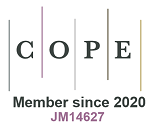An Investigation on the Correlation of Inter-story Drift and Performance Objectives in Conventional RC Frames
Abstract
Keywords
References
Federal Emergency Management Agency, NEHRP Guidelines for the Seismic Retrofit of Buildings, FEMA 273, 1997.
Federal Emergency Management Agency, Prestandard and Commentary for the Seismic Rehabilitation of Buildings (FEMA-356), 2000.
American Society of Civil Engineers, Seismic Rehabilitation of Existing Buildings (ASCE41-06), 2006.
American Society of Civil Engineers, Seismic Evaluation and Retrofit of Existing Buildings (ASCE41-13), 2013.
Erduran, Emrah, and Ahmet Yakut. “Drift Based Damage Functions for Reinforced Concrete Columns.” Computers & Structures 82, no. 2–3 (January 2004): 121–130. doi:10.1016/j.compstruc.2003.10.003.
Ghobarah A, On Drift limits associated with different damage levels, Performance-based seismic design concepts and implementation, PEER 2004/2005.
Haselton C, Deierlein G, Assessing Seismic Collapse Safety of Modern-Reinforced Concrete Moment-Frame Buildings, PEER Report 2007/08.
Bebamzadeh A, Ventura C.E., Pandey B.H, Liam Finn W.D., Taylor G, Design Drift Limits for Performance-based Seismic Assessment and Retrofit Design of School Buildings in British Columbia, Canada. 2012.
Habibi, A.R., and M. Izadpanah. “New Method for the Design of Reinforced Concrete Moment Resisting Frames with Damage Control.” Scientia Iranica 19, no. 2 (April 2012): 234–241. doi:10.1016/j.scient.2012.02.007.
Yakut A, Solmaz T, Performance based Displacement Limits for Reinforced Columns under Flexure. 15 WCEE, LISBOA 2012.
Sharifi, Ashkan, Mahmoud-Reza Banan, and Mohammad-Reza Banan. “A Strain-Consistent Approach for Determination of Bounds of Ductility Damage Index for Different Performance Levels for Seismic Design of RC Frame Members.” Engineering Structures 37 (April 2012): 143–151. doi:10.1016/j.engstruct.2011.12.025.
Iranian Code of Practice for Seismic Resistant Design of Buildings, Standard No.2800, 4th edition, 1393.
Iranian national building regulations, ninth issue, reinforced concrete buildings design and construction, 1392.
Iranian national building regulations, sixth issue, loads on buildings, 1392.
Yavari S., Shaking table tests on the response of reinforced concrete frames with Non-Seismic Detailing. Ph.D. Thesis, Vancouver, Canada, University of British Columbia, 2011.
Pacific Earthquake Engineering Research Center PEER, OpenSees manual, 2009.
Hoshikuma, Jun-ichi, Kazuhiko Kawashima, and Kazuhiro Nagaya. “A Stress-Strain Model for Reinforced Concrete Columns Confined by Lateral Reinforcement.” Doboku Gakkai Ronbunshu no. 520 (1995): 1–11. doi:10.2208/jscej.1995.520_1.
R Core Team. R: A language and environment for statistical computing. R Foundation for Statistical Computing, Vienna, Austria. URL http://www.R-project.org/, 2017.
DOI: 10.28991/esj-2018-01137
Refbacks
- There are currently no refbacks.
Copyright (c) 2018 Saeed Rastegarian, Ashkan Sharifi






